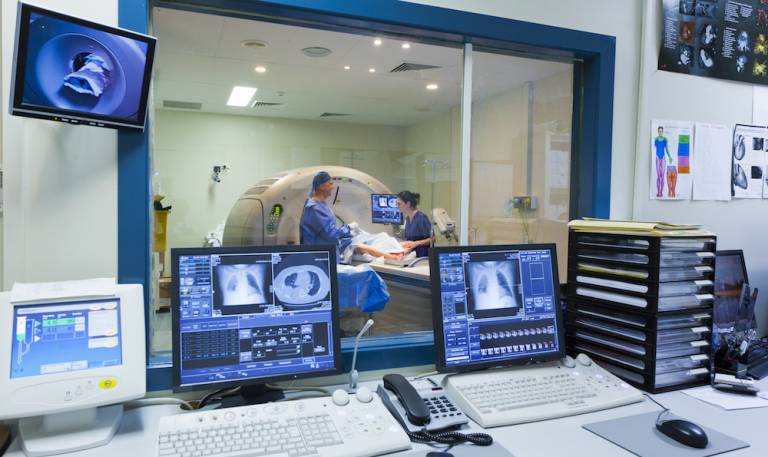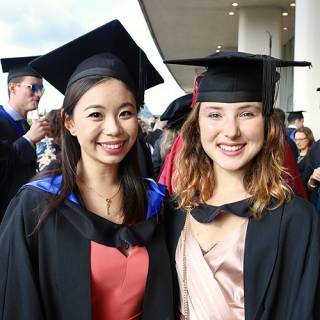
If you are an external student and interested in applying to do an intercalated degree in our department, further information can be found here.
Please also contact Dr Karin Shmueli if you would like to discuss your application.
This is a one-year full-time course for medical students who have completed (or are about to complete) Part I (pre-clinical part) of the MBBS degree. It consists of six half-unit lecture modules plus a one-unit Medical Physics project.
Medical students currently enrolled in their second year of an MBBS or MBChB at any UK university may apply to undertake a year at UCL on this iBSc programme: see further information for external students and how to apply.
Application deadline for external students is 31st March.
This Intercalated degree is designed to introduce medical students to the basic physical principles underpinning healthcare technology. An understanding of Medical Physics and Biomedical Engineering is valuable to doctors in both understanding the benefits and limitations of equipment encountered daily in hospitals, and in medical research where improvements in patient care often depend on the development of new equipment or computer software.
Elsewhere in Europe, where Medicine courses are longer, Medical Physics is considered to be an essential part of the curriculum. For example in Italy, 100 hours of Medical Physics is taught during their six-year course. This intercalated degree is an opportunity to study a very relevant subject that is not currently part of the Medicine curriculum in this country. Because medical imaging forms a large part of the syllabus, our degree is of particular relevance to medical students who are considering an eventual specialisation in radiology.
The course is taught entirely in this department. Students take six half-unit lecture modules, of which three are compulsory, plus a one-unit project with a research group in the Medical Physics and Biomedical Engineering Department at UCL or at UCL Hospitals. Students select the three remaining lecture modules from the list given below. Weekly tutorials are also provided to supplement the student's background knowledge of physics and mathematics. Most module options are the same as those offered to Medical Physics MSci/BSc and Biomedical Engineering MEng/BEng students. It is strongly recommended, but not required, that students have already studied physics and mathematics up to A-level (or equivalent) standard.
Compulsory Modules:
- MPHY0012 Research Project in Medical Physics
- MPHY0016 Medical Imaging with Ionising Radiation
- MPHY0017 Mathematical Methods in Medical Physics
- One of MPHY0018 Biomedical Ultrasound
or MPHY0019 Magnetic Resonance Imaging & Biomedical Optics
Optional Modules:
You will choose three additional modules from the following:
Recommended Texts
- T. S. Curry, J. E. Dowdey, and R. C. Murry, Christensen's Physics of Diagnostic Radiology, Lea & Febiger: Philadelphia, 4th Edition, 1990. ISBN 0-8121-1310-1. This excellent book is written especially for, and by, diagnostic radiologists. It describes the methods which form the basis of the compulsory medical imaging modules (MPHY0016, MPHY0018 and MPHY0019), but in an intuitive and non-mathematical manner. The friendly and often humourous style of the book makes it a pleasure to read. Intercalated students will find that the non-technical descriptions of magnetic resonance imaging (MRI) and computed tomography (CT), for example, are of tremendous value.
- J. Pope, Medical Physics: Imaging, Heinemann: Oxford, 1999. ISBN 0-435-57094-3. This inexpensive book was written in order to assist A-level students with their study of the Medical Physics option. It describes the basic principles of all the major medical imaging techniques.
- S. Webb, The Physics of Medical Imaging, Taylor & Francis; 2nd Edition, 2012. ISBN-13: 978-0750305730. This book covers all the major areas of medical imaging in some detail, and is a recommended text for some courses.
- Alan Jeffrey, Essentials of Engineering Mathematics, Chapman and Hall/CRC; 2nd edition, 2017. ISBN-13: 978-1138442573. This is a useful resource for students needing to find out more about new mathematical concepts introduced during the year, or remind themselves of material they may already have encountered at A-level.
 Close
Close



